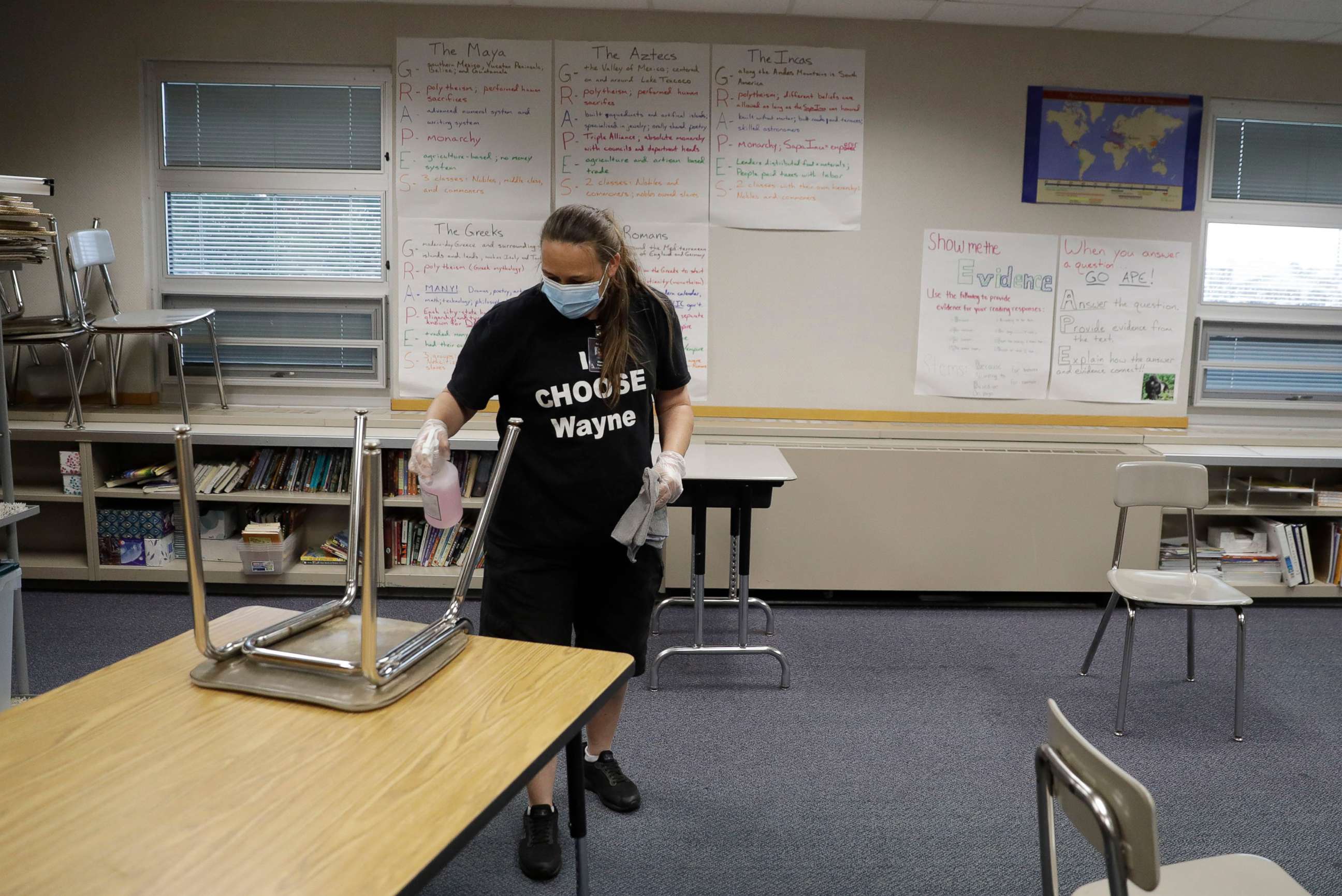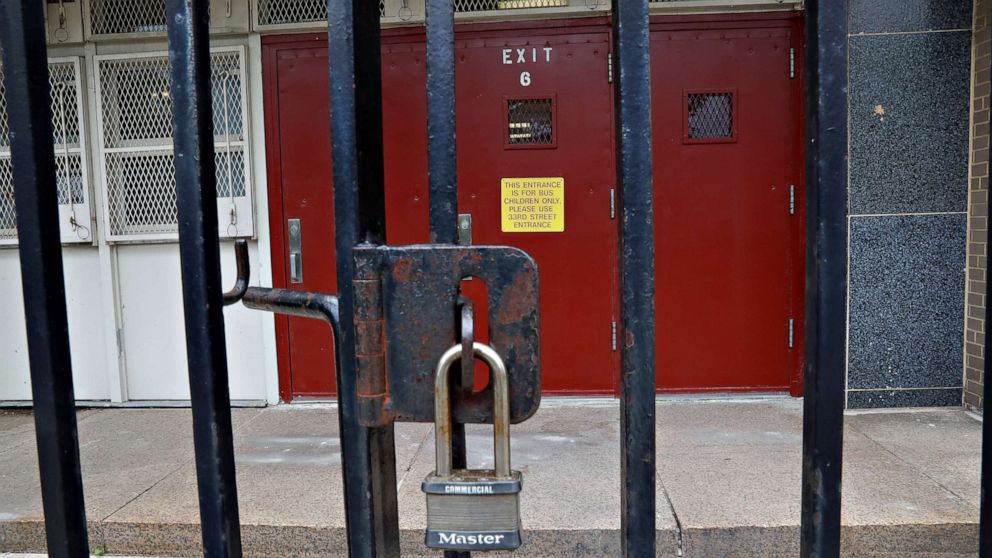3 things to know about kids, schools and COVID-19
Everyone agrees it’s not healthy to keep kids stuck at home, with the American Academy of Pediatrics encouraging school districts to resume in-person class time for the health of the nation's children.
But when it comes to the virus and its potential to spread quickly, it’s less clear what will happen when they return.
Here are three things to know about kids, schools and COVID-19:
It’s rare for kids to get really sick. But there’s limited evidence on how easily they spread it.
If there’s one clear finding among researchers, it’s that young people infected with the virus are less likely to get really sick, and the inflammatory syndrome that some children experience is considered very rare.
But it’s also become widely accepted that asymptomatic teens and young adults in general are driving transmission of the virus in the U.S. because of work or attending social gatherings.
In one county in Virginia, for example, health officials said 150 teens between the ages of 16 and 18 tested positive for the virus in the last week -- most of them after having traveled to Myrtle Beach, South Carolina. On Monday, a county in Missouri announced that 82 children, counselors and staff tested positive at a local summer camp despite promises by the facility that it would take reasonable steps to prevent the spread.
Less evident, though, is whether much younger children -- under age 10 or so -- are more or less likely to spread the virus than adults.
Initial studies in China and a small study by the American Academy of Pediatrics concluded children probably aren’t "drivers" of the virus. And there are other studies based on modeling that assume children aren’t spreading COVID-19 because they are less likely to test positive.
But health experts warn there are caveats. Much of the research is small in scale and not peer reviewed. Also, kids in the U.S have mostly been at home since the spring.
"We haven’t been able to really watch kids in their natural habitat," said John Brownstein, chief innovation officer at Boston Children’s Hospital and a professor at Harvard Medical School.
"Even if they are less capable of getting or transmitting the virus, you are countering that (in schools) with closer proximity and contacts over longer periods of time," added Brownstein, an ABC News contributor. "We don’t have evidence of them in school settings … There aren’t a lot of kids who have had a normal day in the past four months."

Comparisons with Europe don’t really work.
Trump this week compared the U.S. to Germany, Denmark, Norway and Sweden that he insisted reopened schools with "NO PROBLEMS" and suggested that Democrats were standing in the way of reopening schools because it would benefit them politically to stall the country.
The picture in Europe, though, might not be so straightforward, including new data from Germany that found infections among children and teens under age 19 went from about 10% in early May to nearly 20% in late June.
There’s counter evidence in other parts of the world too: In Israel -- where social distancing is reportedly an issue -- schools have struggled to remain open because of outbreaks.
Meanwhile, Dr. Anthony Fauci, the nation’s top infectious disease expert, warns the U.S. isn’t like Europe because it remains stuck in its "first wave" of infections after so many states and communities either couldn’t -- or wouldn’t -- lock down.
"In reality only about 50 percent of the nation shut down with regard to other things that were allowed" besides schools, Fauci told Congress last week. "In many of the European countries, 90 percent, 95 percent of all activities were shut down. So that is one of the reasons why you saw -- particularly in Italy, which shut down to a much greater extent than we did -- the cases came way down in a sharp curve downward and then stayed."
In other words, activities -- including camps and schools -- resumed in Europe under very different circumstances than the U.S. in which kids were less likely to encounter the virus in the first place.
"It is the fact that the countries in Europe and the other countries that you have there had a much more uniform response," Fauci said.
As of Tuesday, the United States had the ninth-worst mortality rate in the world, with 39.82 deaths per 100,000 people, according to Johns Hopkins University. The COVID Tracking Project reported Wednesday a new daily high in cases in the U.S., with 62,197 total cases. Fauci has warned numbers top 100,000 cases a day, which "puts the entire country at risk."
Dr. Ashish Jha, director of the Harvard Global Health Institute, said how Americans act now and what safety precautions they take will have an on impact school openings.
"We need to close bars, we need to close indoor large gatherings and have everybody wearing masks," he said this week. "If we start all that now I think there is a pretty good shot we can open schools and keep them open all fall."
Tune into ABC at 1 p.m. ET and ABC News Live at 4 p.m. ET every weekday for special coverage of the novel coronavirus with the full ABC News team, including the latest news, context and analysis.
The CDC guidelines might change, even if the science doesn’t.
Dr. Robert Redfield, director of the Centers for Disease Control and Prevention, has long recommended that schools space children six-feet apart, open windows when possible and avoid kids mingling in cafeterias or sharing playground equipment.
That advice was based on findings that the virus primarily was transmitted from person-to-person contact and that commonly touched surfaces would need to be disinfected between uses. Fauci, Redfield and others also have made clear that indoor gatherings are likely to spread the virus.
The CDC also helped to develop a White House plan that called for schools only to open after cases in a community decline for 14 days -- allowing the area to enter "phase 2."
Then came Trump’s tweet.
"I disagree with @CDCgov on their very tough & expensive guidelines for opening schools," the president wrote. "While they want them open, they are asking schools to do very impractical things. I will be meeting with them!!!"
By that afternoon, Vice President Mike Pence was before the cameras with Education Secretary Betsy DeVos, announcing that the CDC and Dr. Redfield -- a political appointee -- would issue new guidance by next week, including a set of five new documents.
"They must fully open, and they must be fully operational and how that happens is best left to education and community leaders," DeVos said of schools.
Redfield offered: "We really don’t have evidence that children are driving the transmission cycle of this."
Redfield later told ABC’s "Good Morning America" that "our guidelines are our guidelines but we are going to provide additional reference documents." He said he was concerned his agency’s initial advice was being used "as a rationale" to keep schools closed and said "these decisions about schools are local decisions."
When asked if the White House had pressured the CDC to change its public health advice for political reasons, White House press secretary Kayleigh McEnany told reporters Wednesday: "No, not at all. But the president made his opinion quite clear publicly this morning on Twitter for all to see."
What to know about coronavirus:
- How it started and how to protect yourself: coronavirus explained
- What to do if you have symptoms: coronavirus symptoms
- Tracking the spread in the US and Worldwide: coronavirus map




